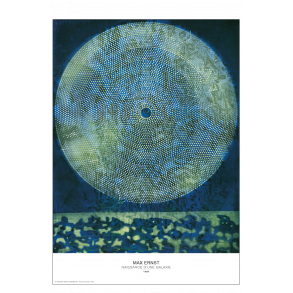Enceladus is Saturn's sixth largest moon, and the target no more than 252 km in radius. What makes Enceladus special is that in the little moon there is water - which even behaves spectacularly. Enceladus was first discovered in 1789, but first became really interesting in 2005. It was discovered that this small and ice-cold moon shoots geysers full of water vapor in a length equal to three times its own radius (ie approx. 750 km) in a larger area around its south pole. With this discovery, Enceladus turned from an immense moon among many in our solar system, to a bit of a scientific mystery. How can it be possible, however, that a small moon with a surface temperature of -201 ° C spins out water vapor in this way?
This NASA poster, designed by the brothers behind Invisible Creatures, stands out for something sharp in both color, line and motif. It is almost self-evident that the starting point of the poster was these fantastic geysers. As with the other posters in NASA's poster series, "Enceladus / # 7" entices with a fantastic travel destination and (literally) "out of this world" crazy experiences. To this end, on this poster, they have chosen to place an elderly couple and their dog in a spacy spacecraft between the geysers (instead of young sporty types). NASA's message is clear: Imagine a future where it is so normal, safe and easy to travel around space that even older people can easily do it! Imagine, perhaps, that it is you who will live so long that you have the opportunity ... Enceladus: Beautiful at distance as well as close by How Enceladus' geysers can do is not yet established. Scientists believe that the water under the ice crust circulates down to the bottom, where it is heated and reacts chemically with the rock bottom. This hot water, loaded with minerals and dissolved gases, creates chimney-like shafts up to the surface where the geysers then occur. Based on observations and calculations, the geysers are believed to be more or less constant. The water vapor forms a huge halo of fine ice dust around Encaladus, which - together with the ice itself - makes it reflect incredibly light. Therefore, Enceladus is also one of the clearest and most luminous celestial bodies. In other words, Enceladus is a geological marvel, and beautiful at distance as well as close by. The fact that it has gained a place among NASA posters is more than well-deserved.





